My guide Emily met me on a corner for this delightful walking tour of Hoi An, including lots of fascinating sights. Her real name apparently means “Charming”, and is also the name for the bright orange flower behind her here. She is sad because these flowers are often offered to dead ancestors, but happy that they are so beautiful too.
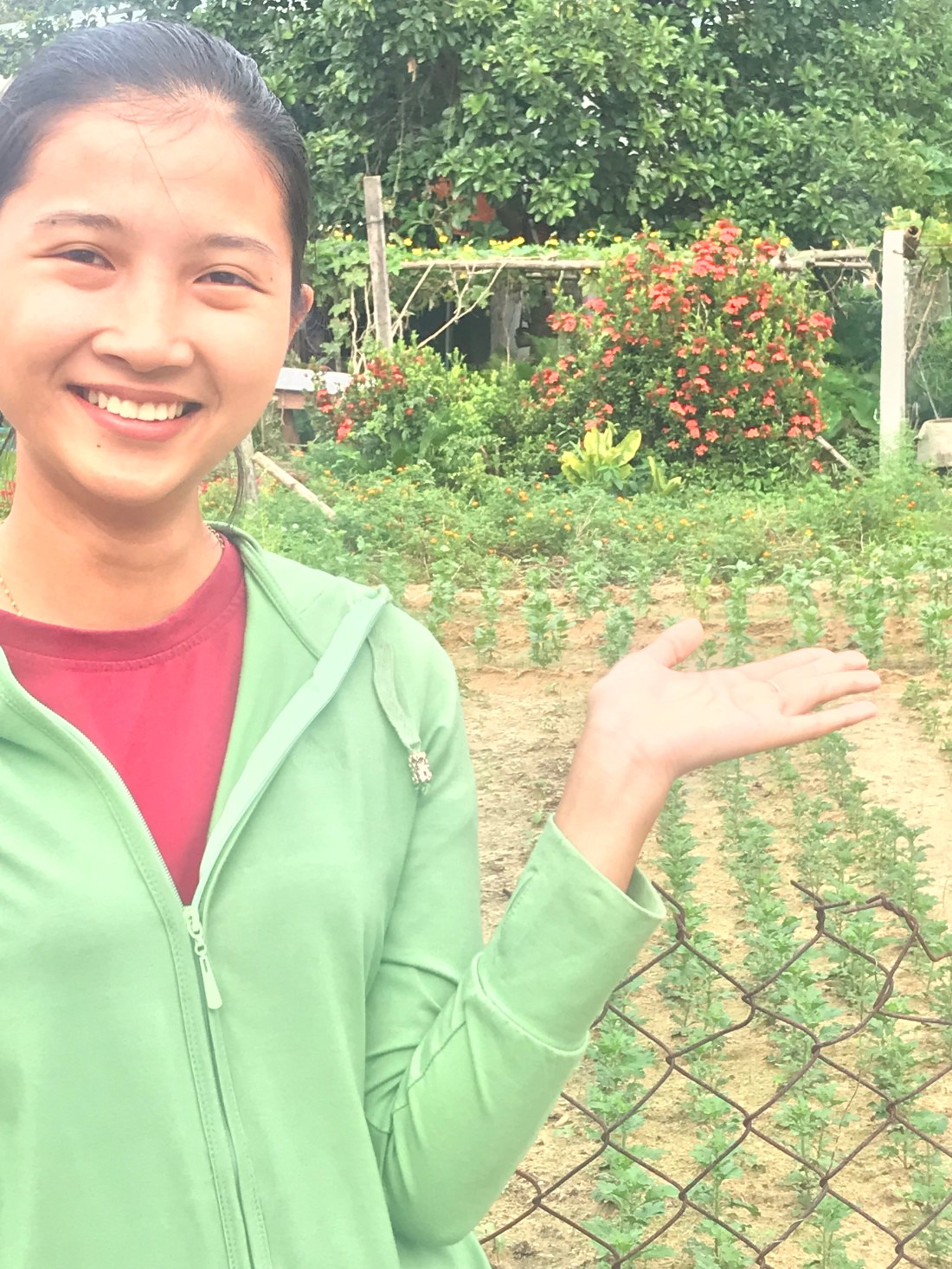
Emily talked as we walked a lot about the local history, politics, agriculture and culture. We visited a traditional noodle factory, making a type of noodles that you can only get in Hoi An:
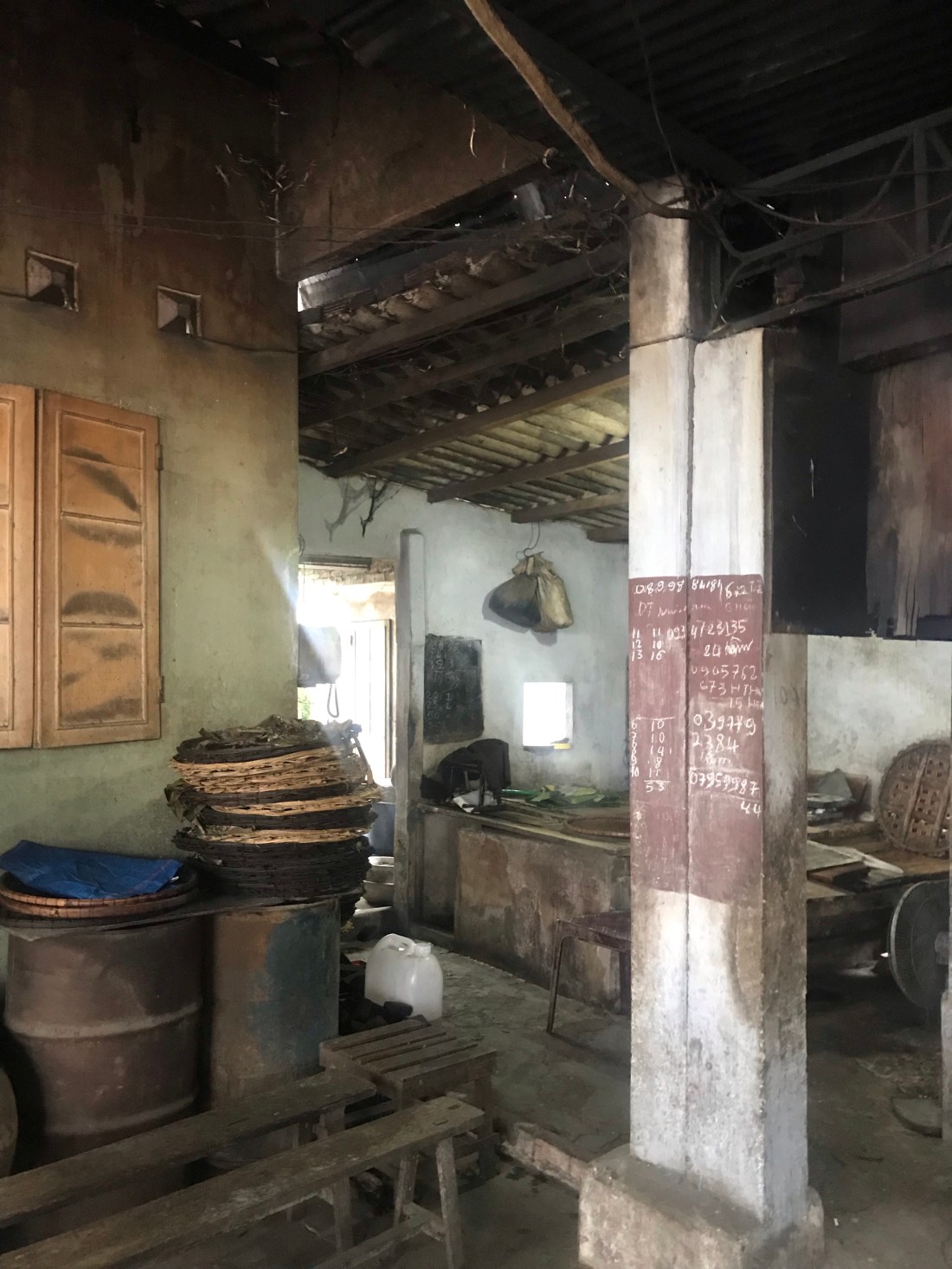
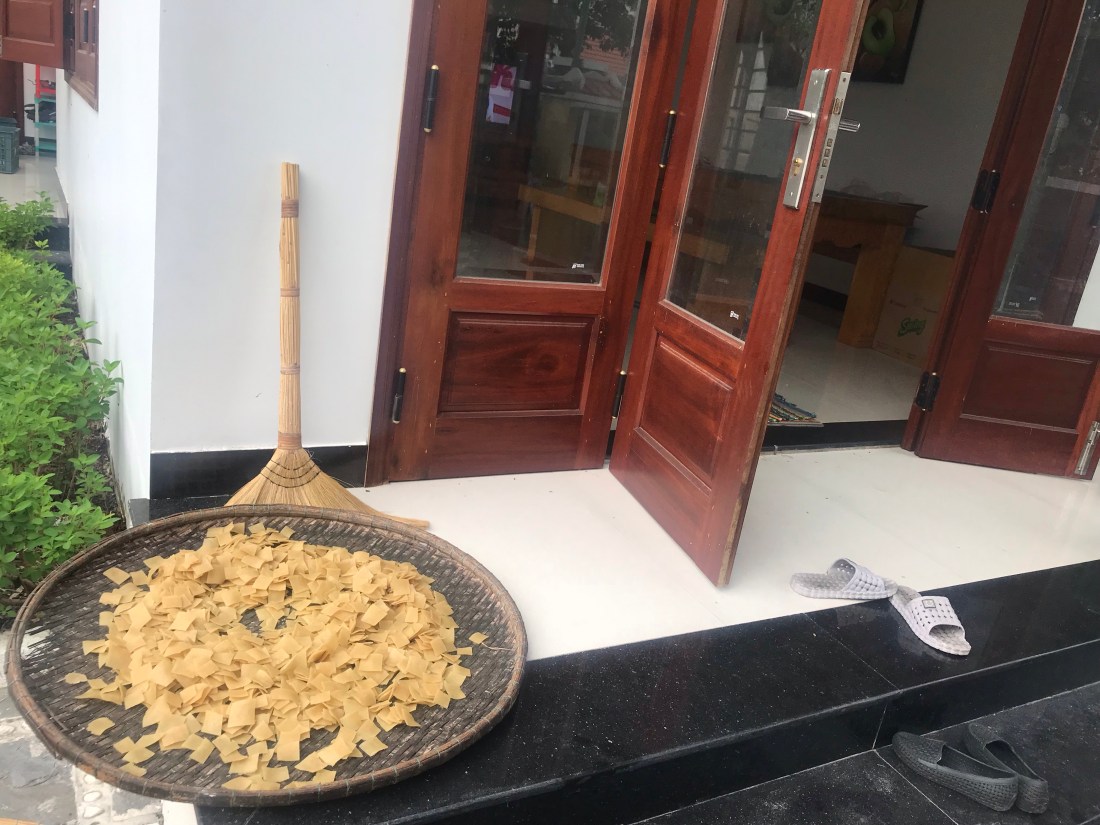
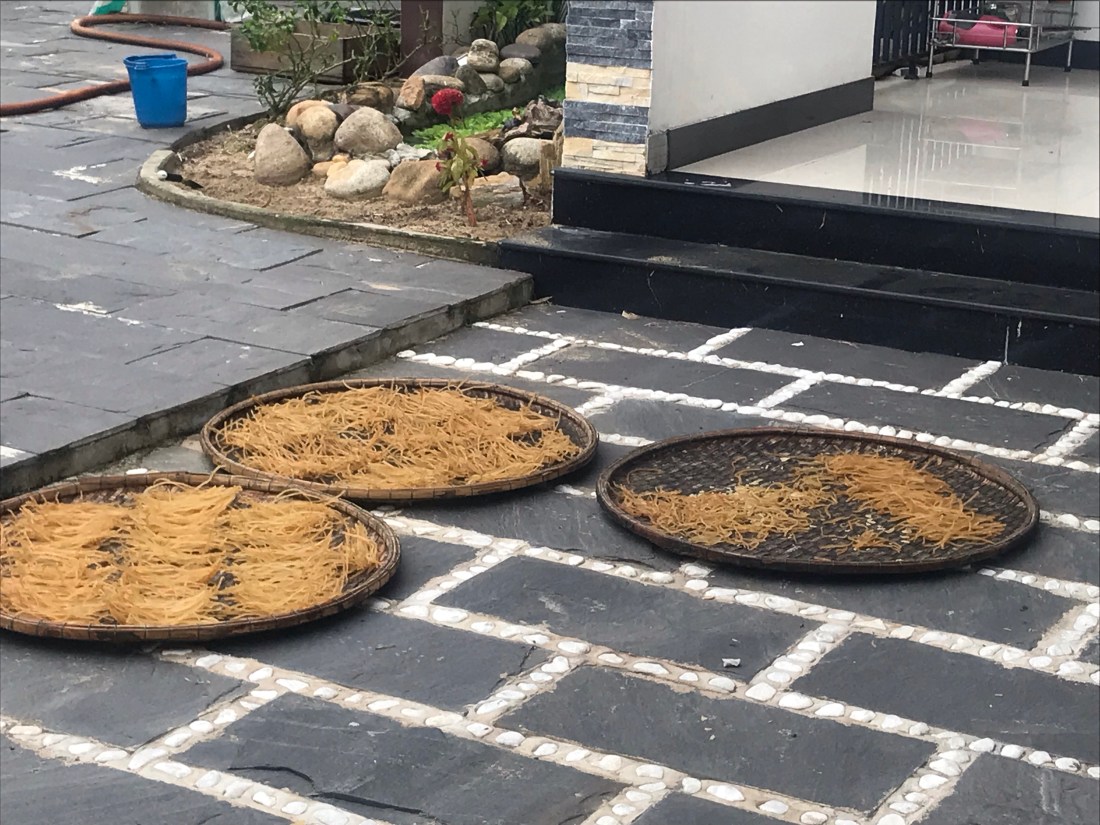
The guy who now runs the noodle factory has quite a few workers, but still has to start work at 1am and only finish about 5 or 6pm normally apparently, in order to keep up with the demand for his noodles!
Then we visited a beansprout factory and the lady who has learnt how to smile through smiling for the camera for people on these tours! She has a wonderful smile too. She and her husband also work long hours, and are both in their mid to late 60s. Apparently they plan to keep working until they can no longer walk. Then they will retire. They must be disappointed that their children do not want to work that many hours every day, so have got themselves other jobs working in the tourist industry. I wonder whether this traditional way of growing beansprouts will survive once the older generation stop doing it.
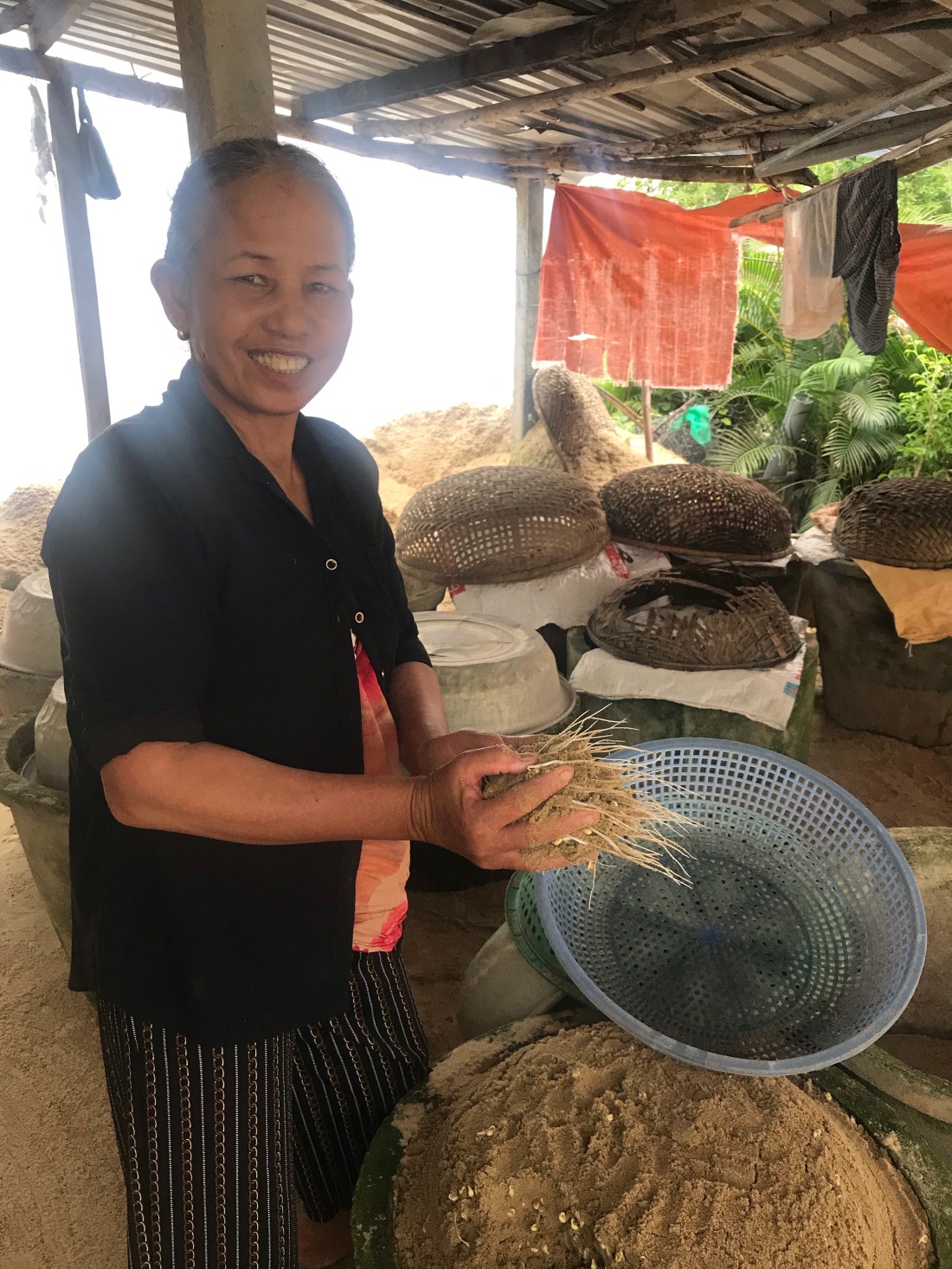
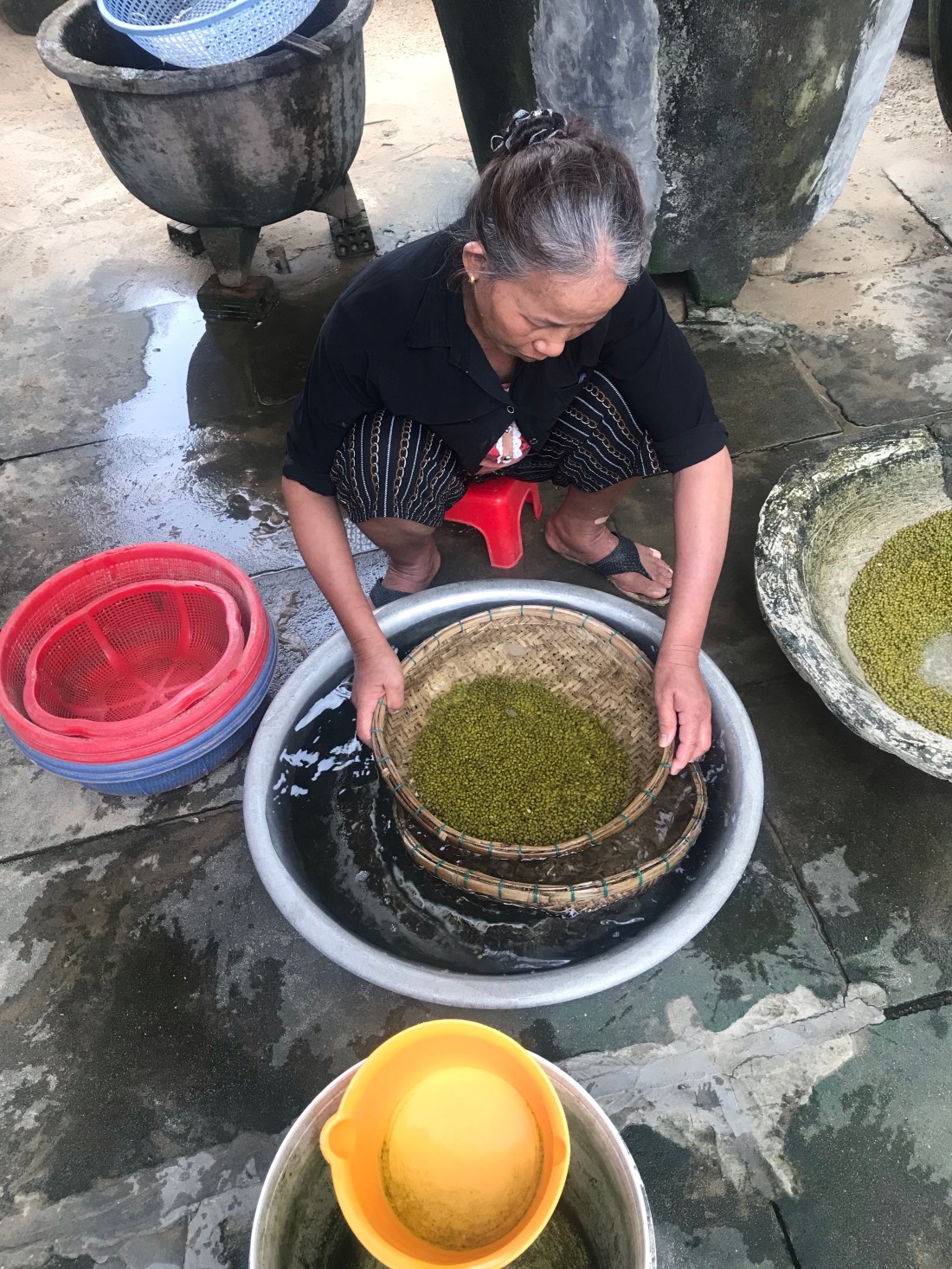
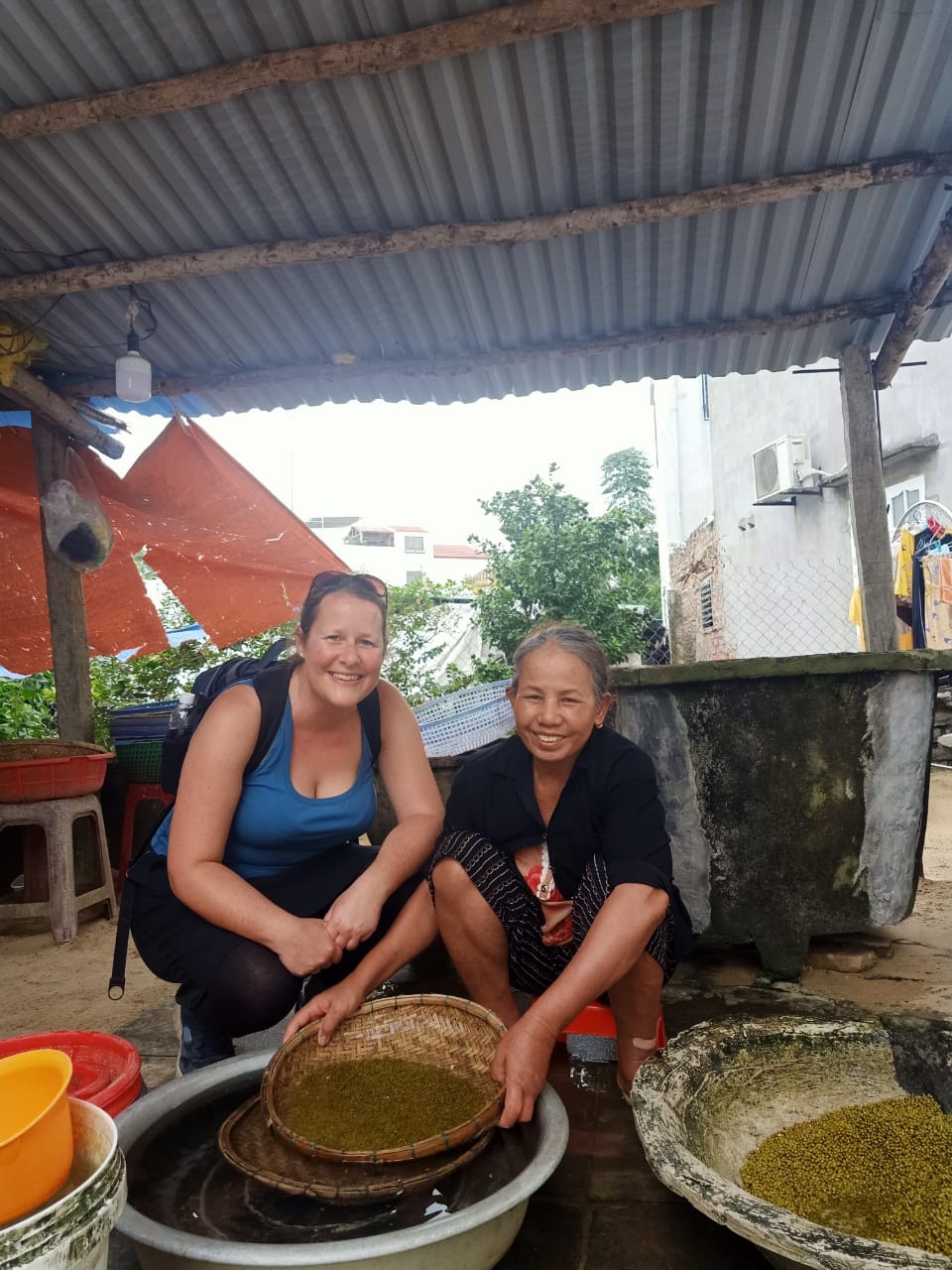
Then we visited a temple for worship of the family ancestors. Everyone with the same family name worships here and helps pay for its upkeep. The door on the right is for men, on the left for women and the central doors (opened on special festival days) are for the ancestors.

The mini temple on the right is for single women. Emily was very positive about the idea of having our own temple in the forecourt. But then she was very positive about most things! I wondered why there was the need to separate out single women in this way. She didn’t mention any similar arrangement for single men. I wish I had asked her more about the role of women now in Vietnam.
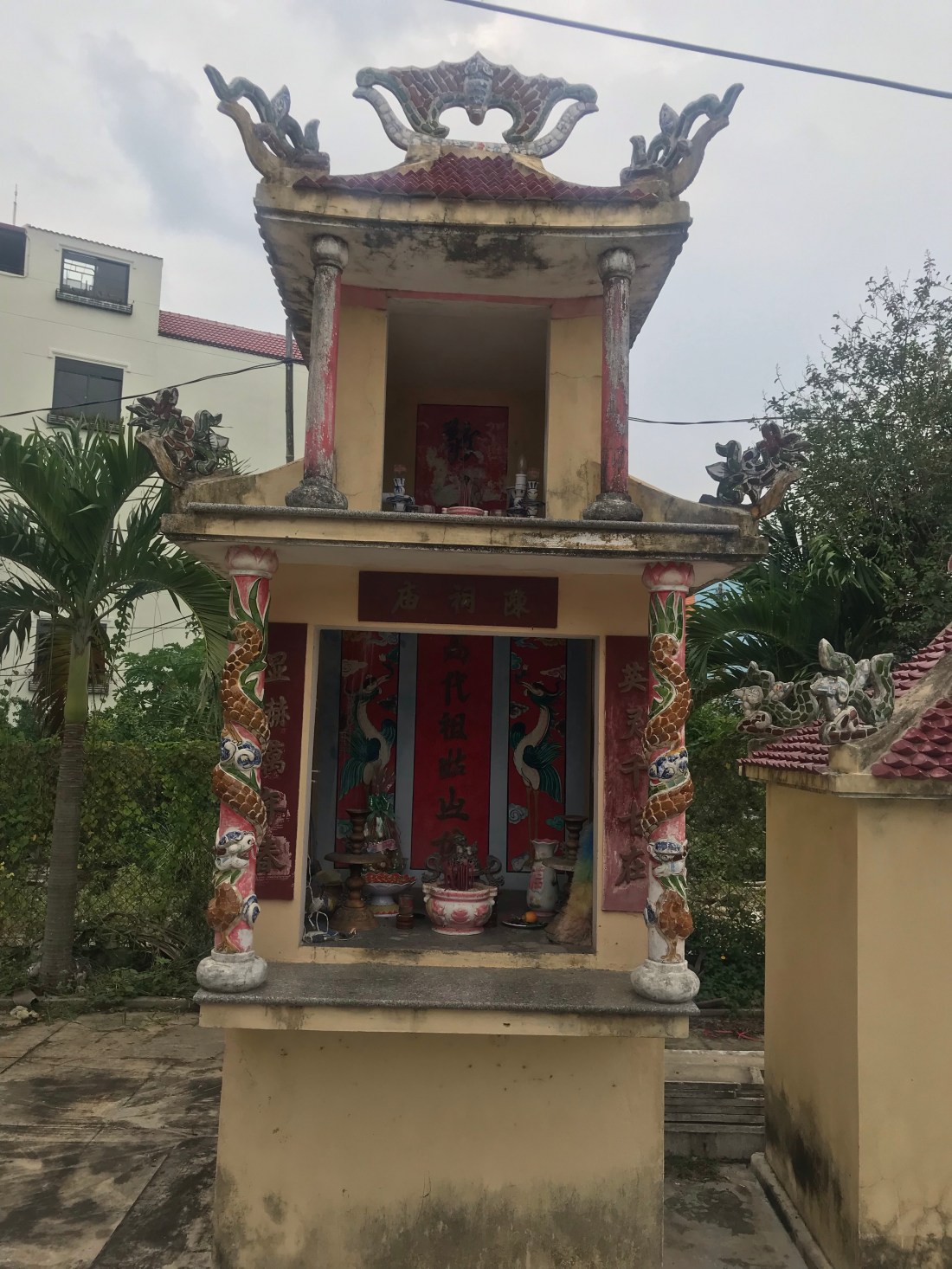

She mentioned that normally people burn three incense sticks here. One for heaven one for hell and one for human life. The idea being that somehow the burning creates a connection between all three.
To my amazement, we passed a huge church building too. Apparently there is quite a big Christian population here, but people will travel sometimes 30km to come to this church.
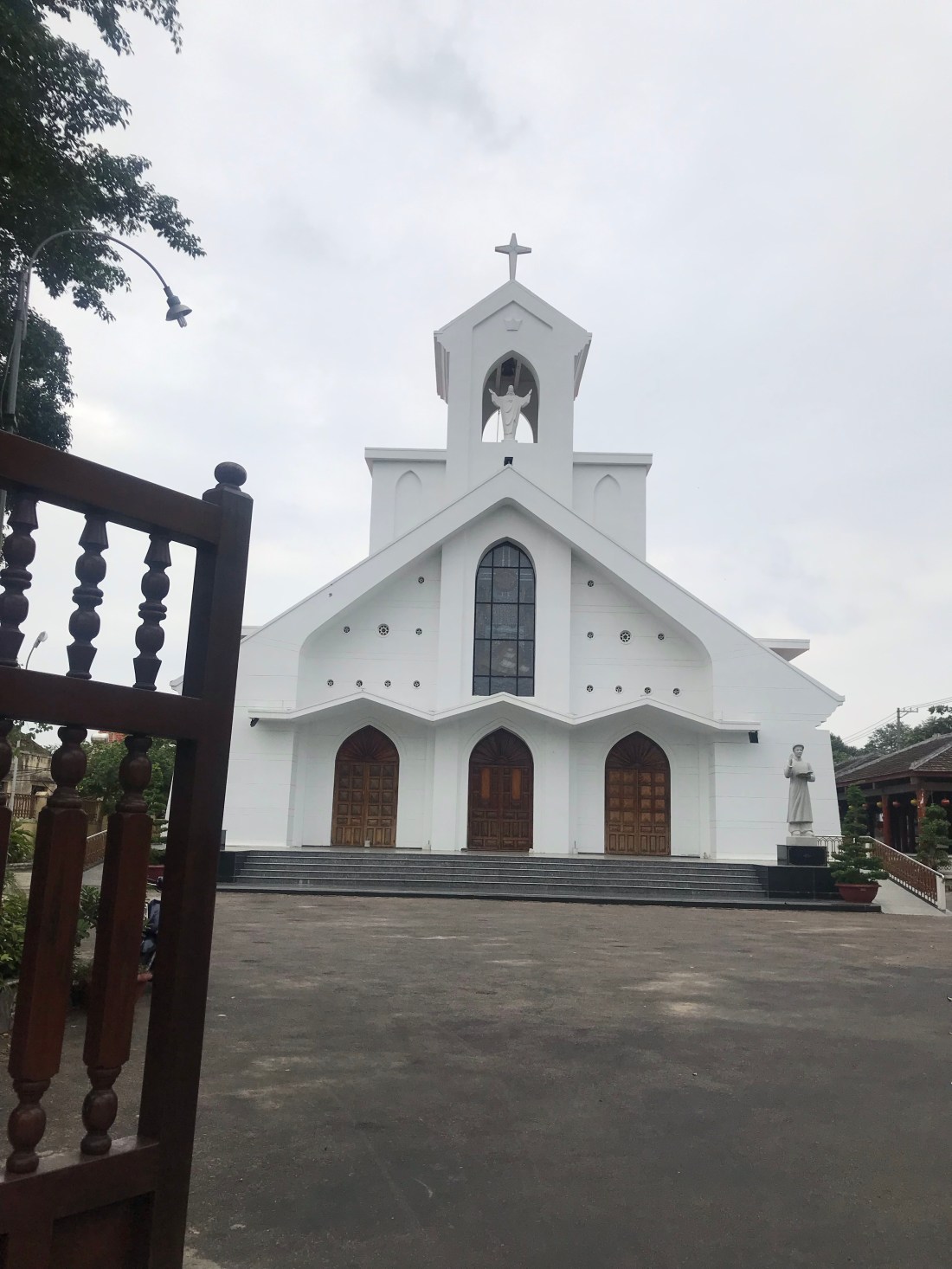
I’m not sure how the ancestor worship could work for the Christian population. I imagine it’s something they disengage with, as worship of anyone or anything other than God is seen in Christian theology as something that imprisons people one way or another, whereas worship of God sets people free. But it sounds like most other people here, whether Buddhist or of no particular other faith, do practise it, albeit with varying degrees of belief about it.
Then we began our street food tour. This was great, as I’d been wanting to try street food, but not at all sure where to start. Everything we tasted was delicious. Vietnamese food does have spicy chilli in it but is not too spicy if you don’t add extra raw chilli to it. It also often has a sweet tang a bit like sweet chilli sauce to it that is very delicious. I can’t remember the names of all the dishes but this first was black sesame soup, a sweet dish you could have for a starter. The second dish we had included those special noodles you can only get in Hoi An. The fresh ones only keep for three days, apparently. No wonder the guy has got his work cut out for him!
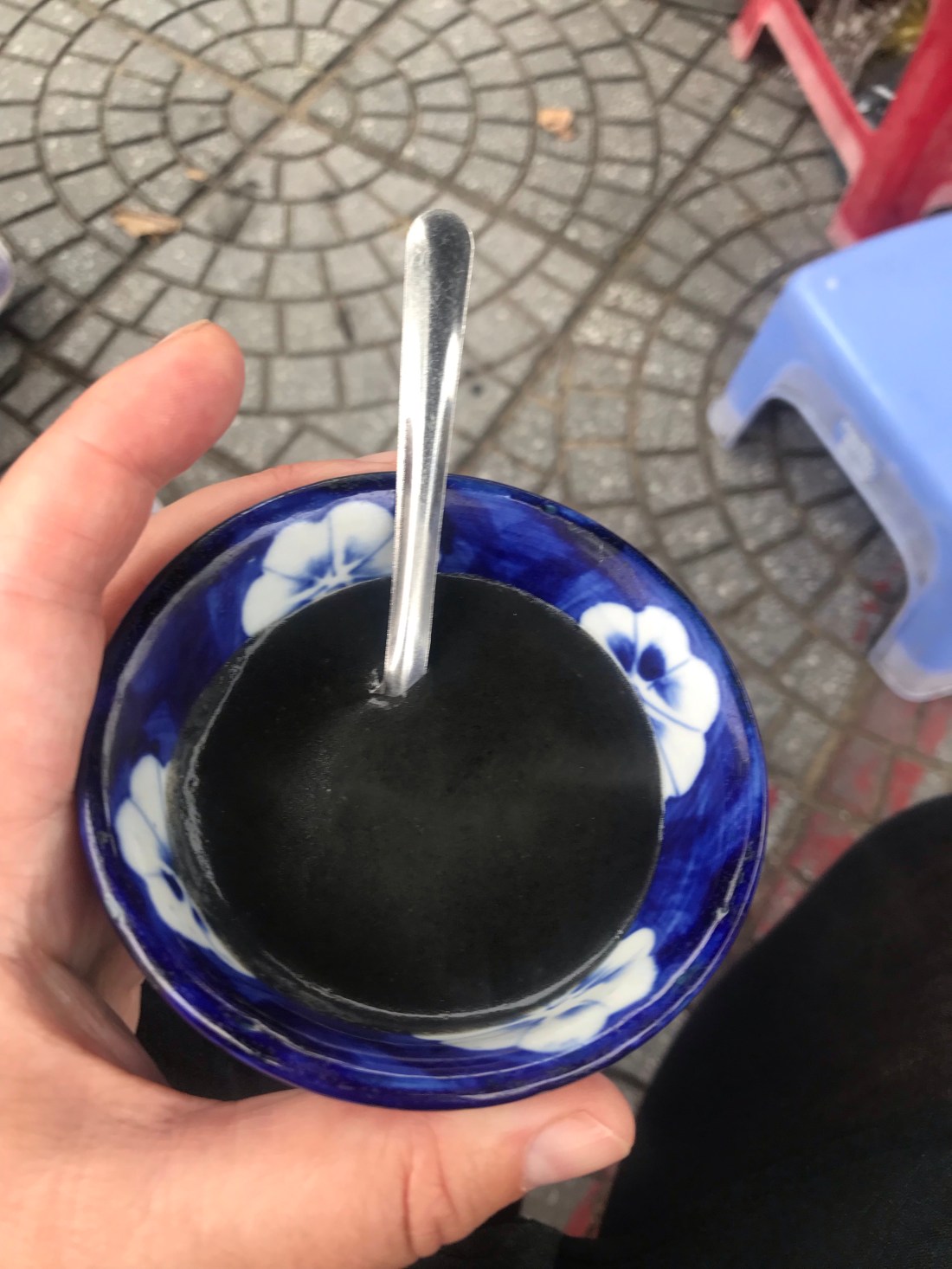
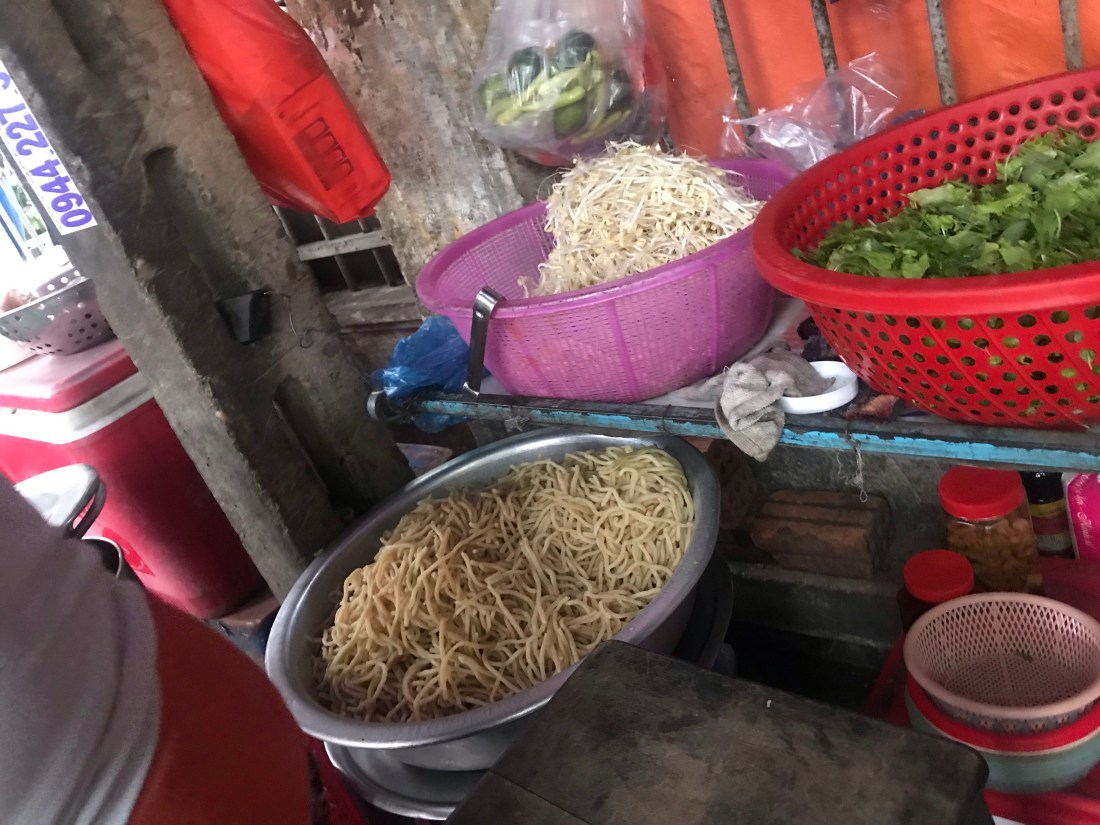

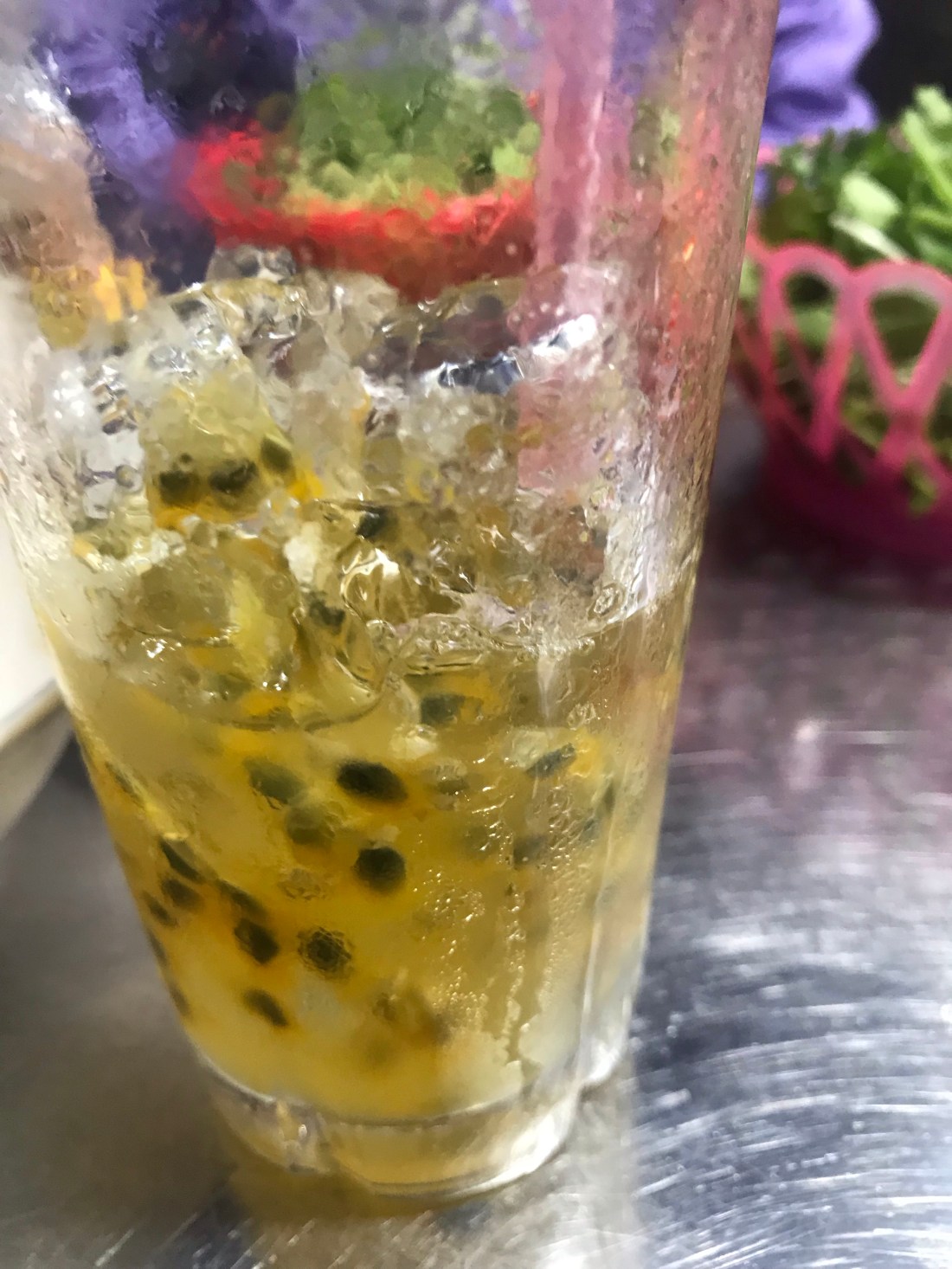
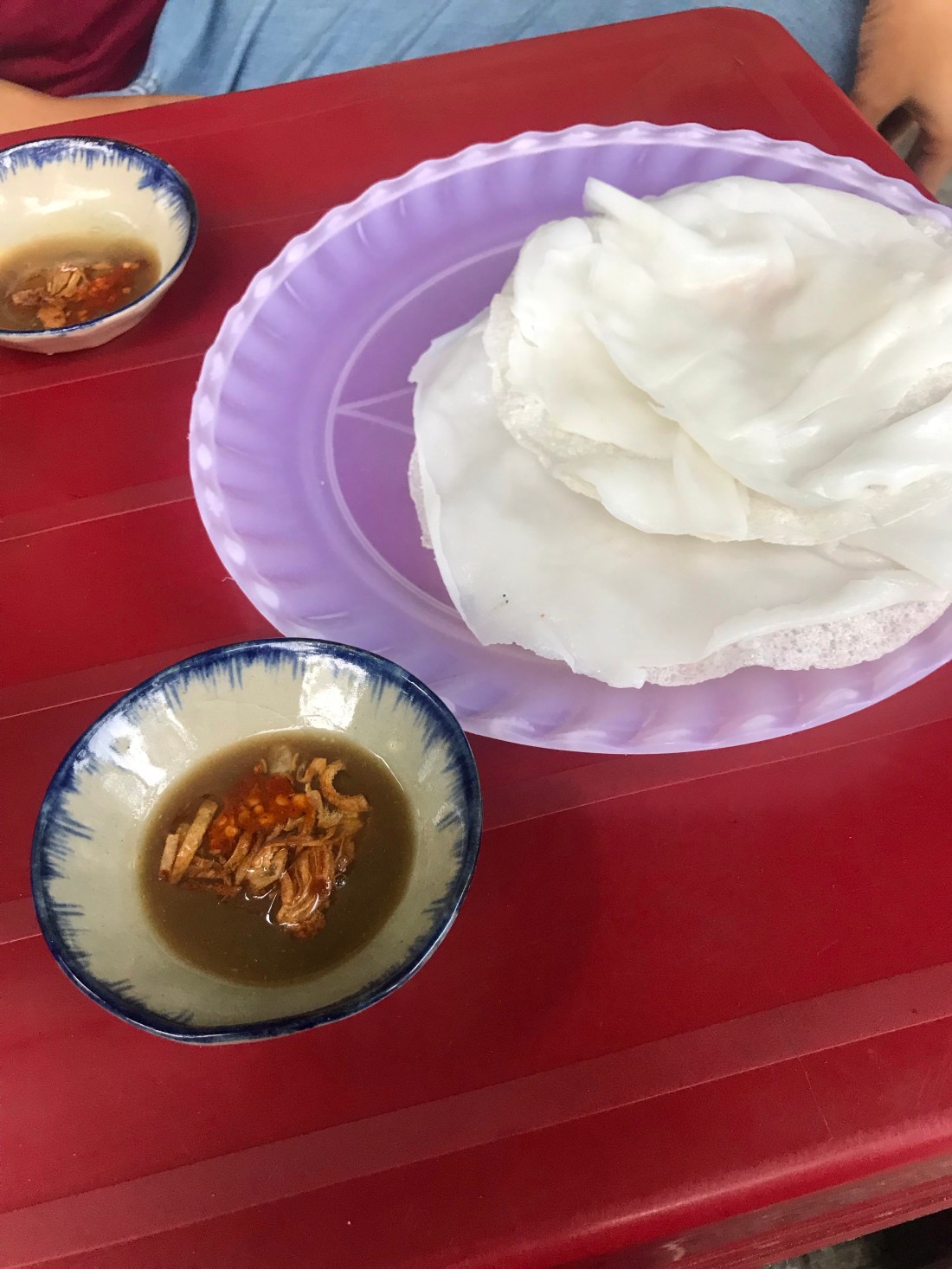
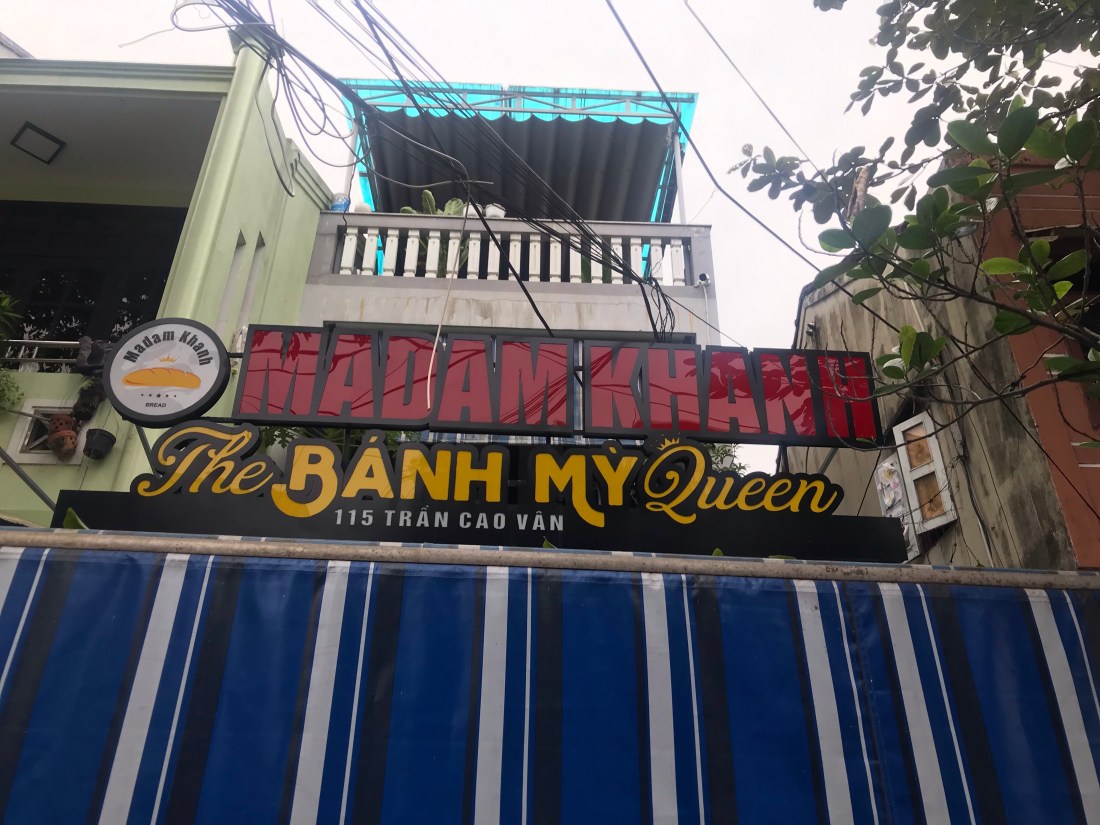
This 👆🏼👇🏼 is one of the most famous street food sellers in Hoi An. Her and her husband are pretty old now but plan on continuing until they drop! They sell a type of Vietnamese baguette called “bahn my”. Apparently the French didn’t only bring an oppressive regime when they occupied Vietnam. They also brought French bread, which the Vietnamese copied but then adapted to make a lighter version that is very good. This street food seller also has a pâté she puts in the banh my with meat filling that is famous. I went for her veggie egg based option this time, feeling rather meat-ed out!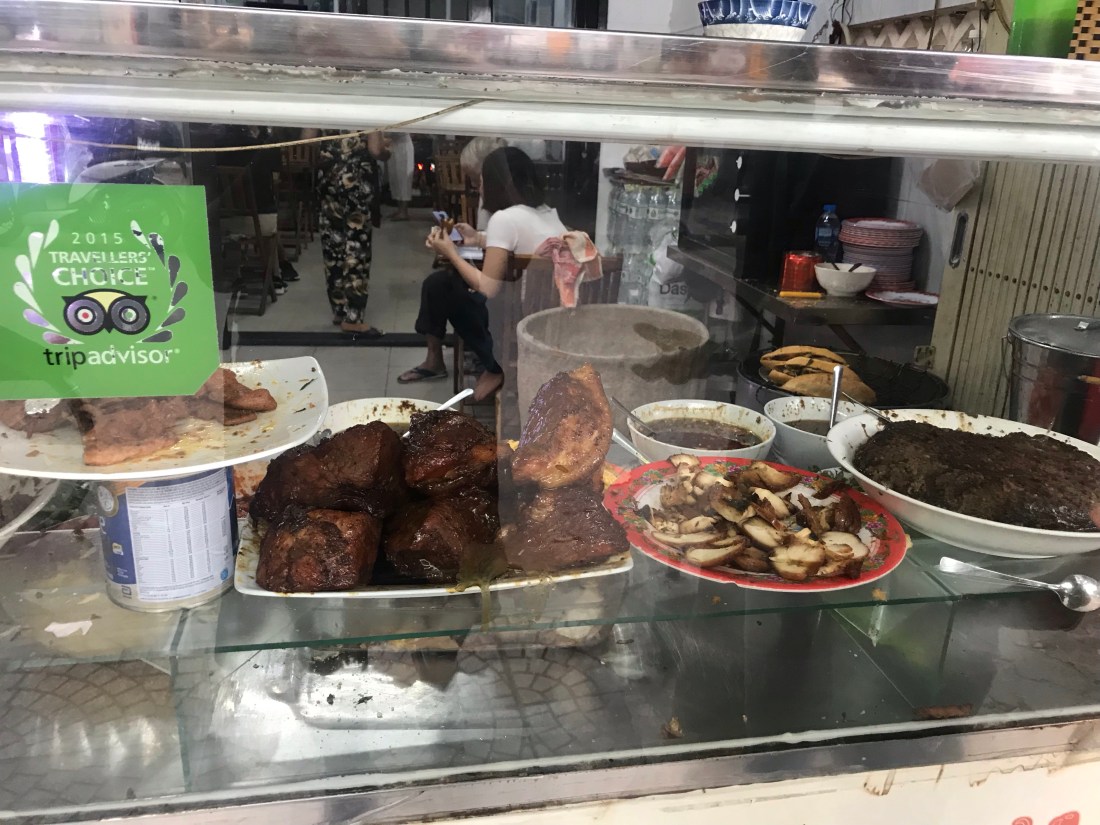
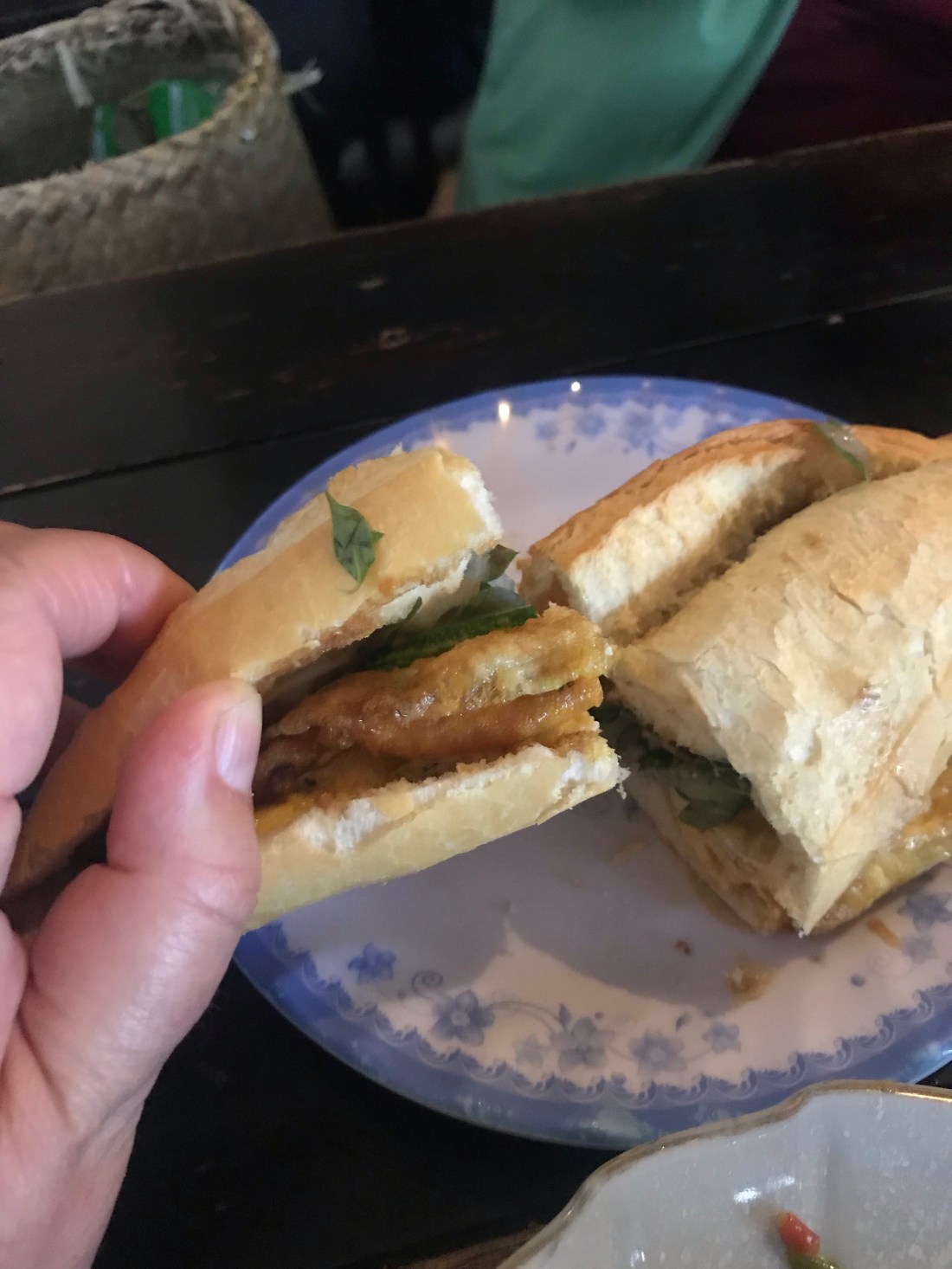
Over my crispy wonton 👇🏼 we had a conversation about climate change, and the different conversations I have been having about it in different parts of the world. Emily was interested to hear about Greta Thunberg.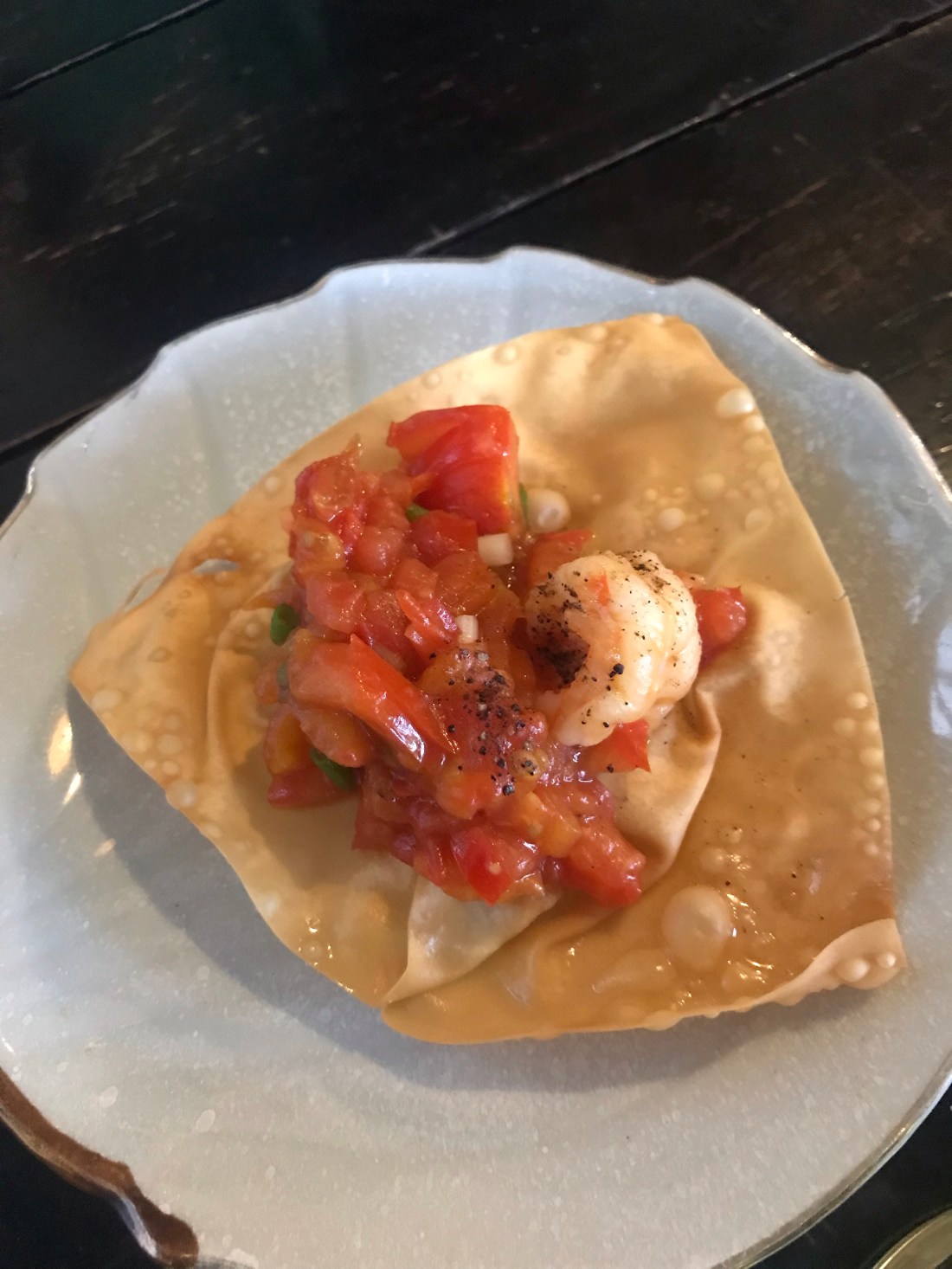
We finished up our street food tour with some Vietnamese cakes made with rice flour, bean curd, and sweet potatoes etc (all grown locally), a wander through the lantern lit streets of the ancient city and then a coffee on a rooftop terrace overlooking it. A beautiful end to my last day in Hoi An and my last day in Vietnam, too.
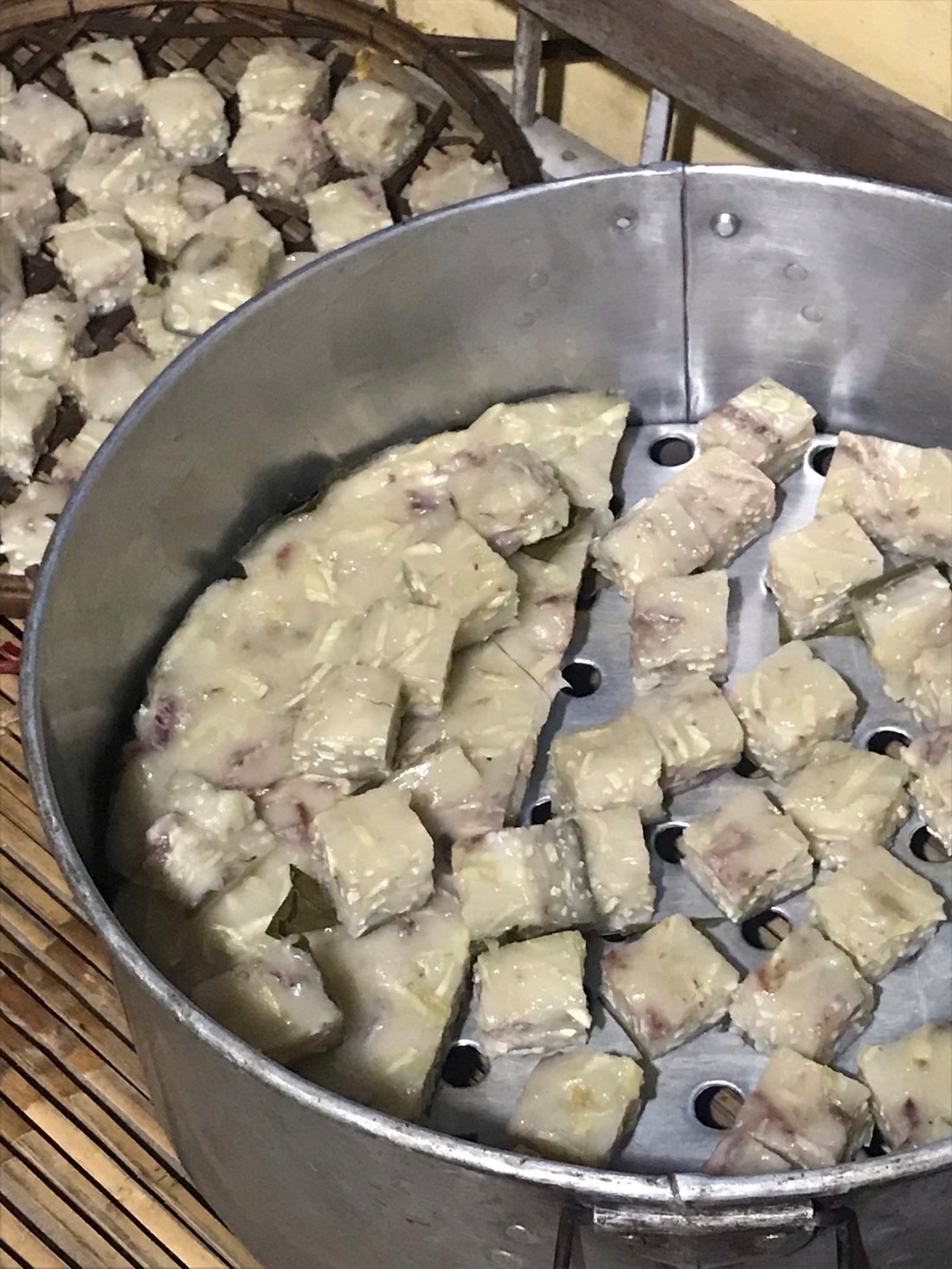
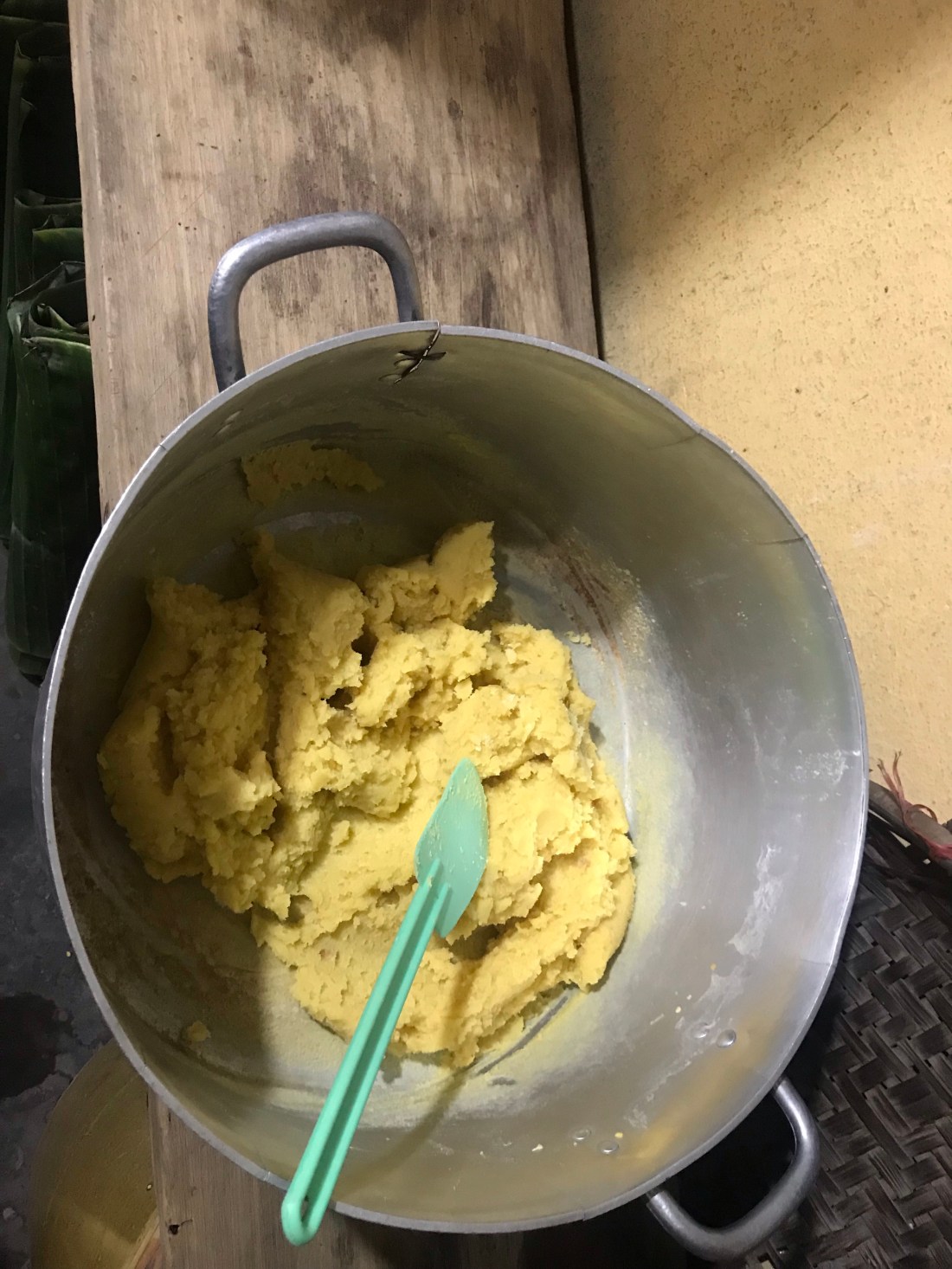
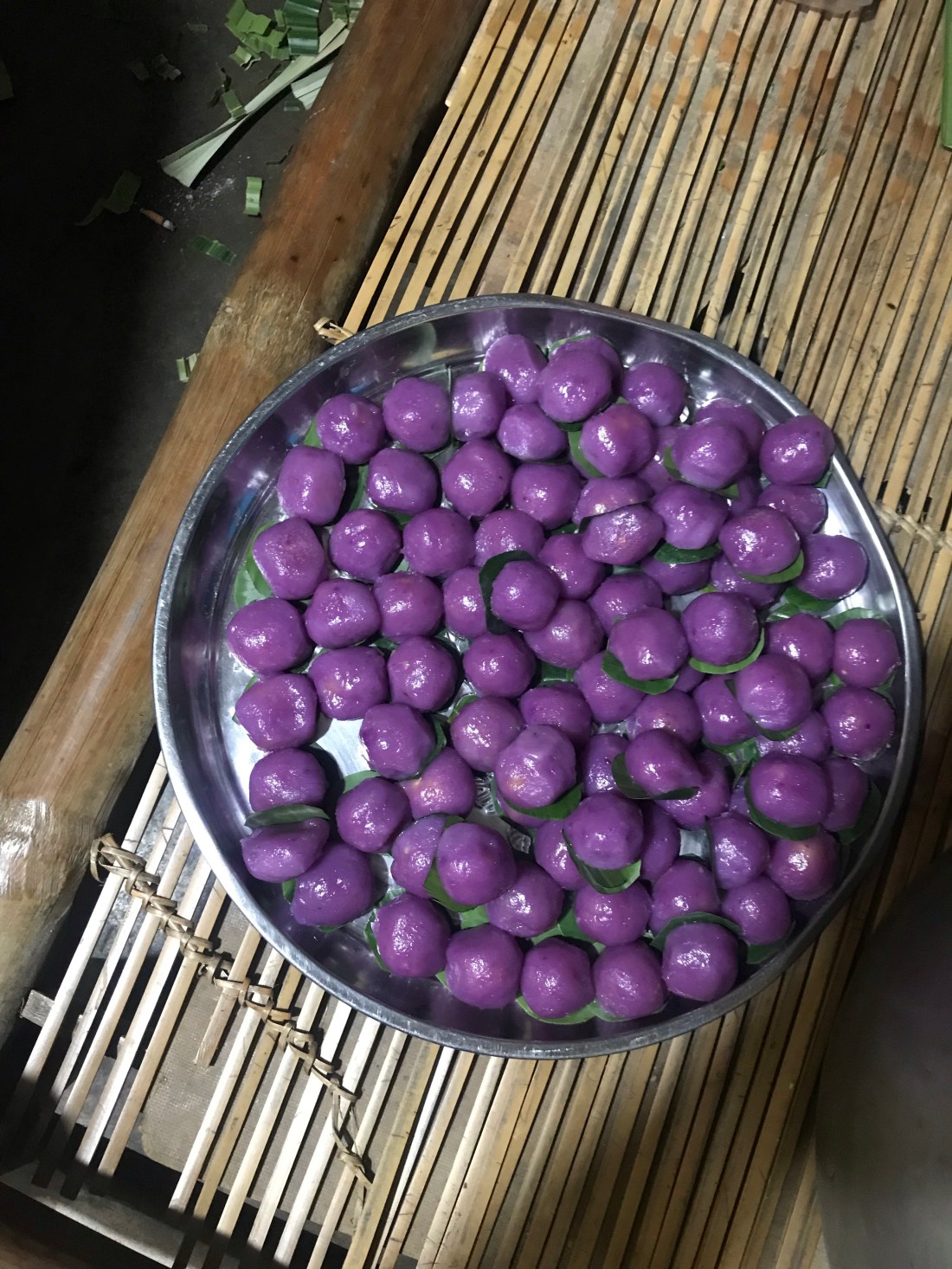
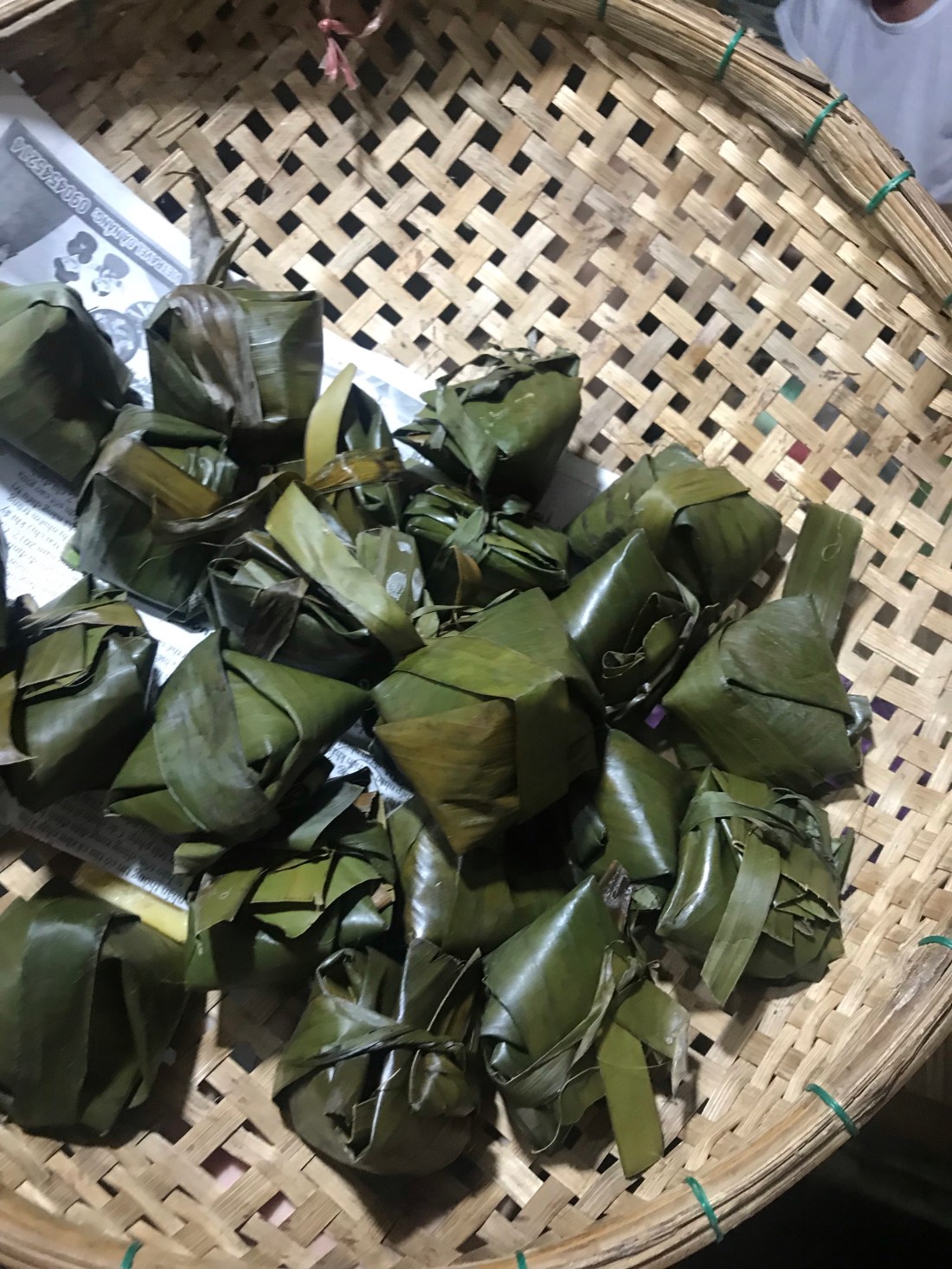
Banana leaves used for wrapping the cakes: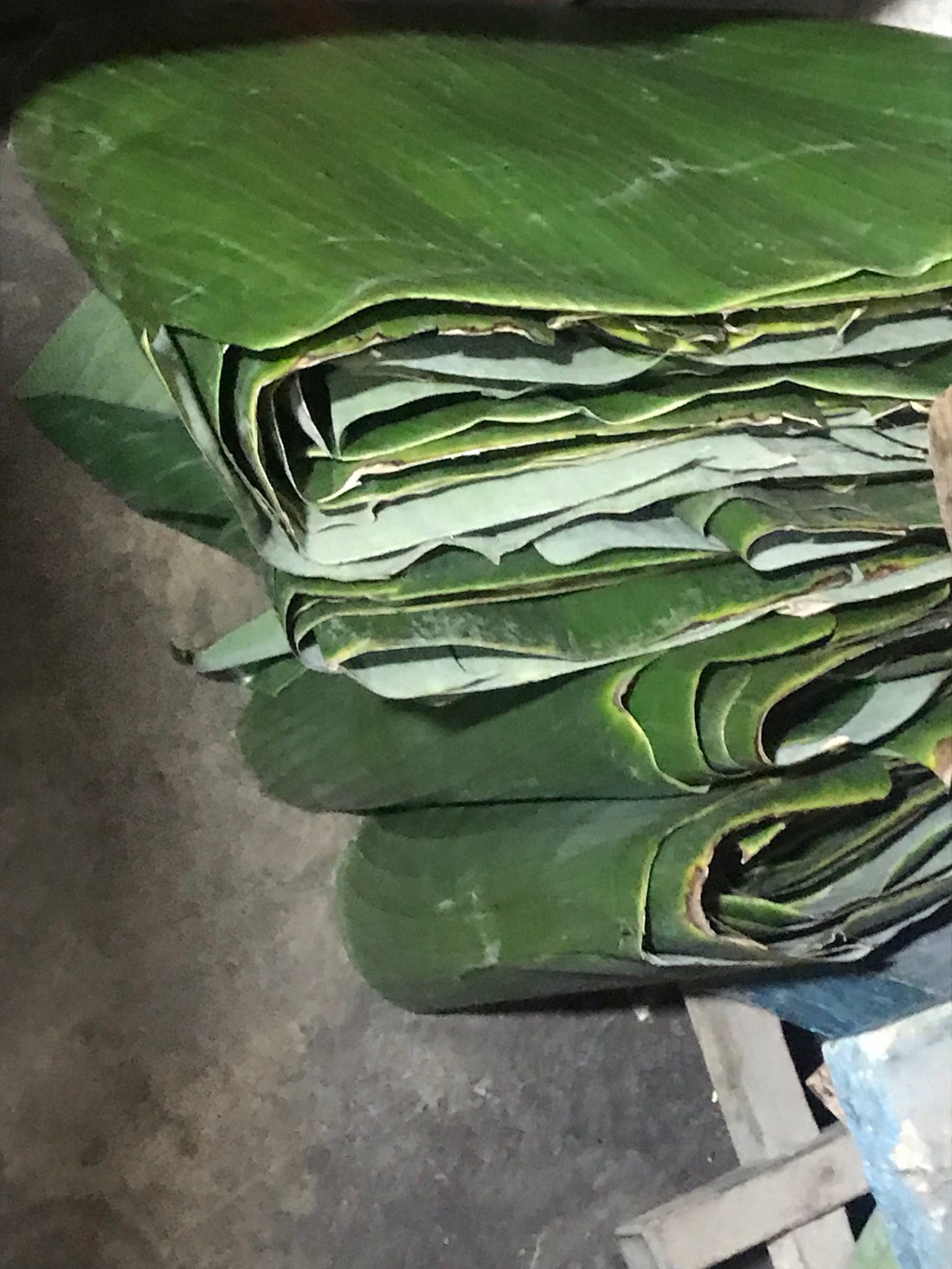
When we arrived this couple were busy making special cakes for guests at a wedding. The purple ones made with purple yam had a similar texture to the Japanese mochi I had in California, though instead of being filled with ice cream they were filled with sweet bean curd.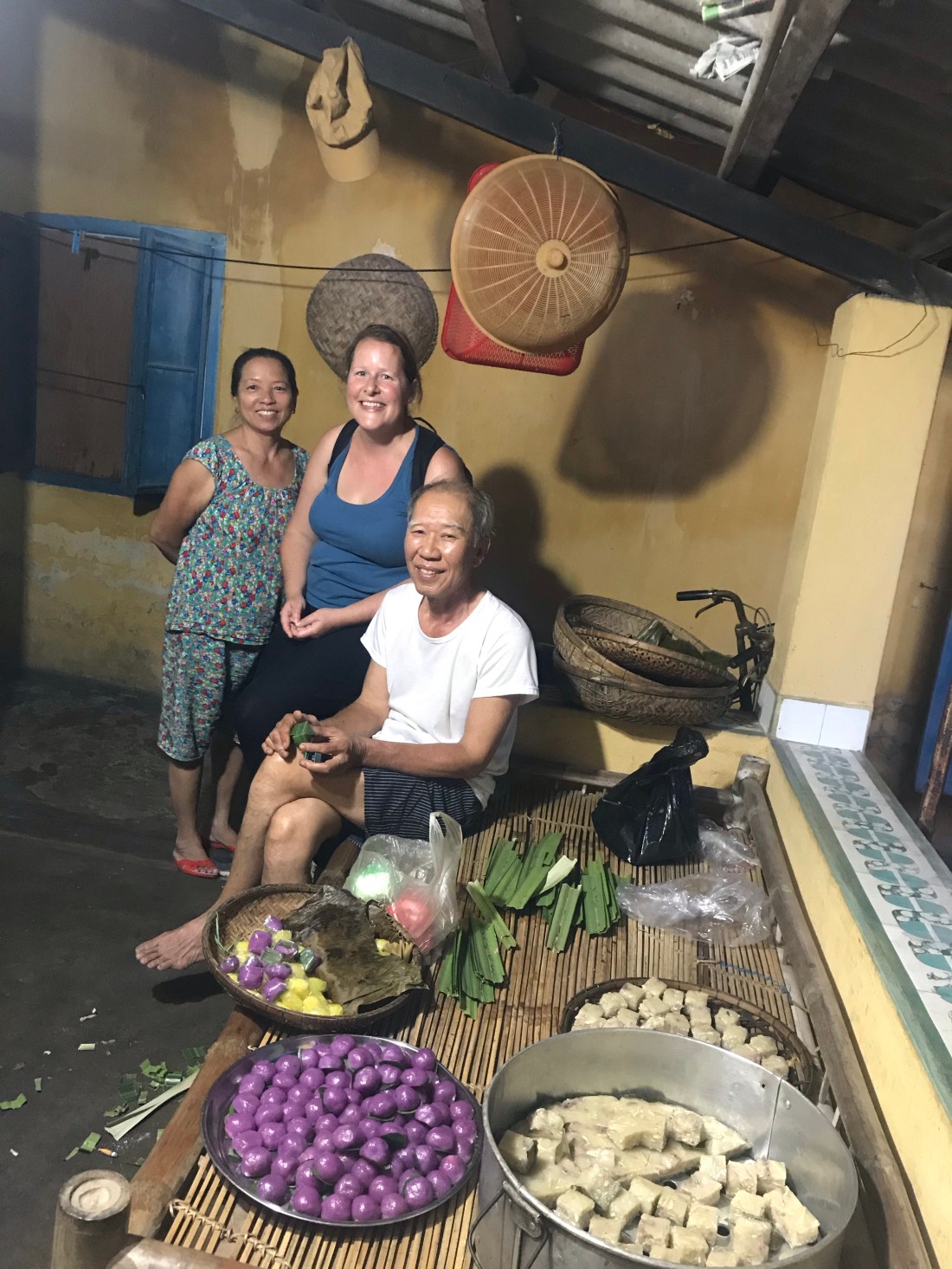
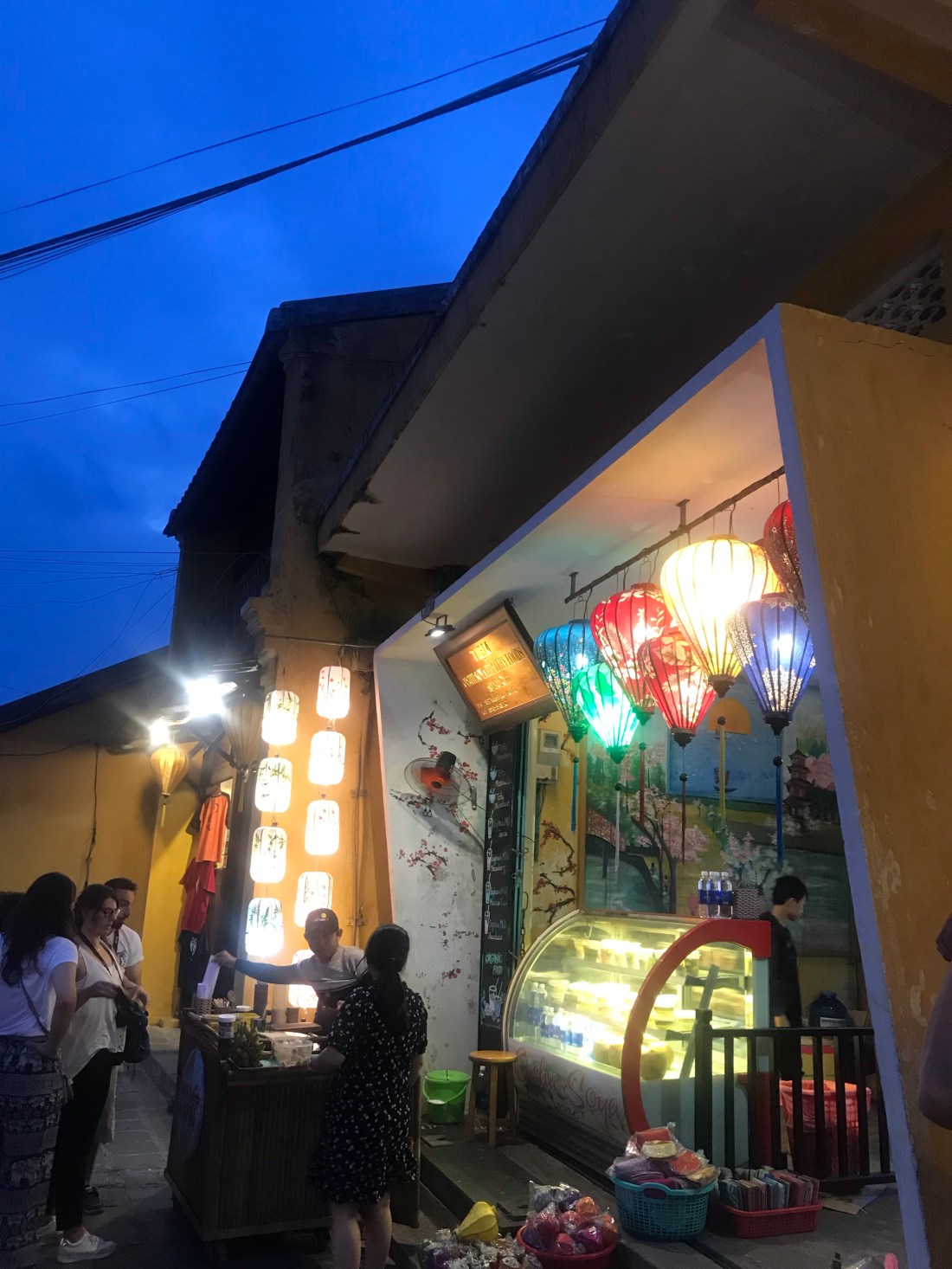
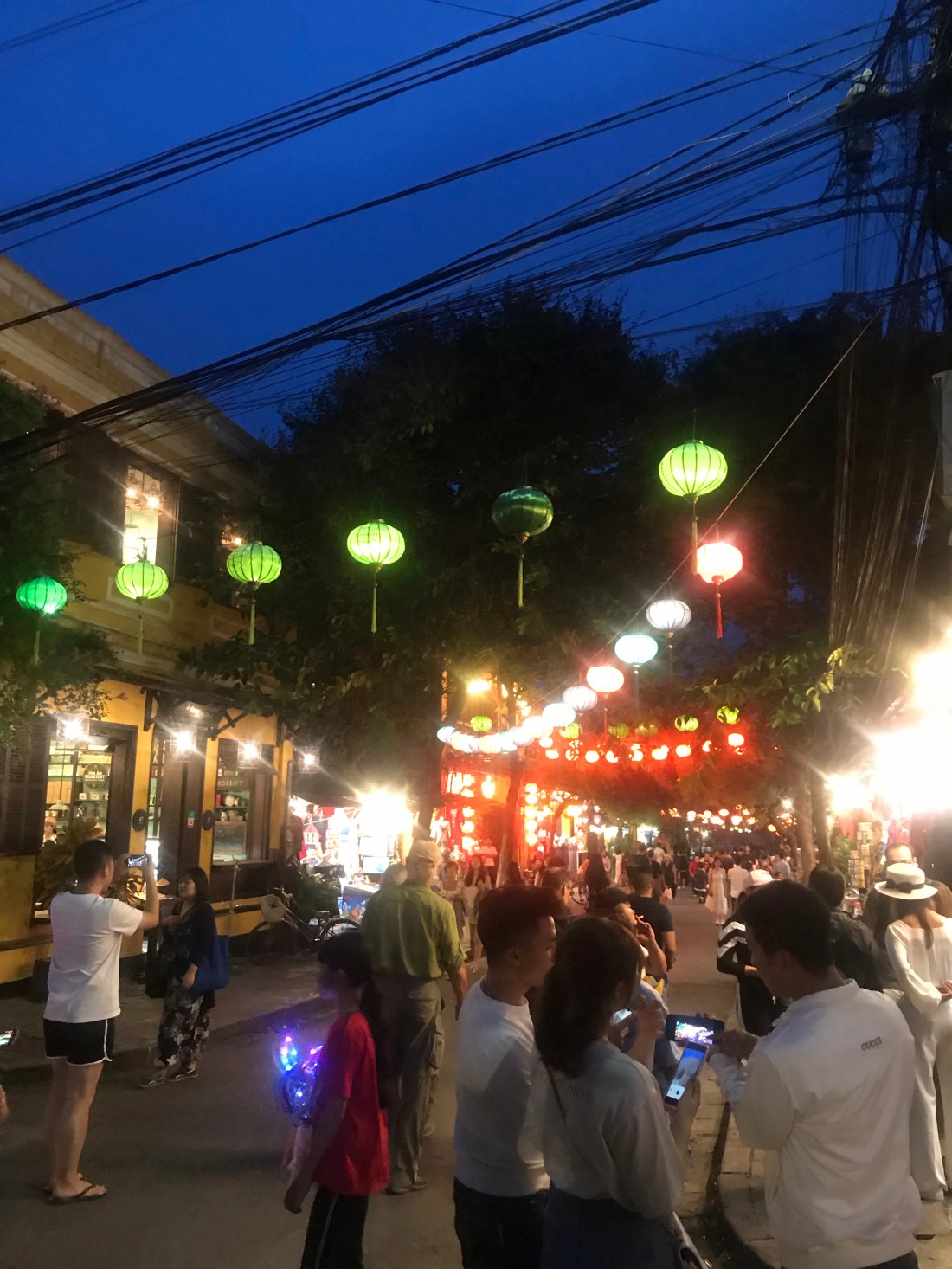
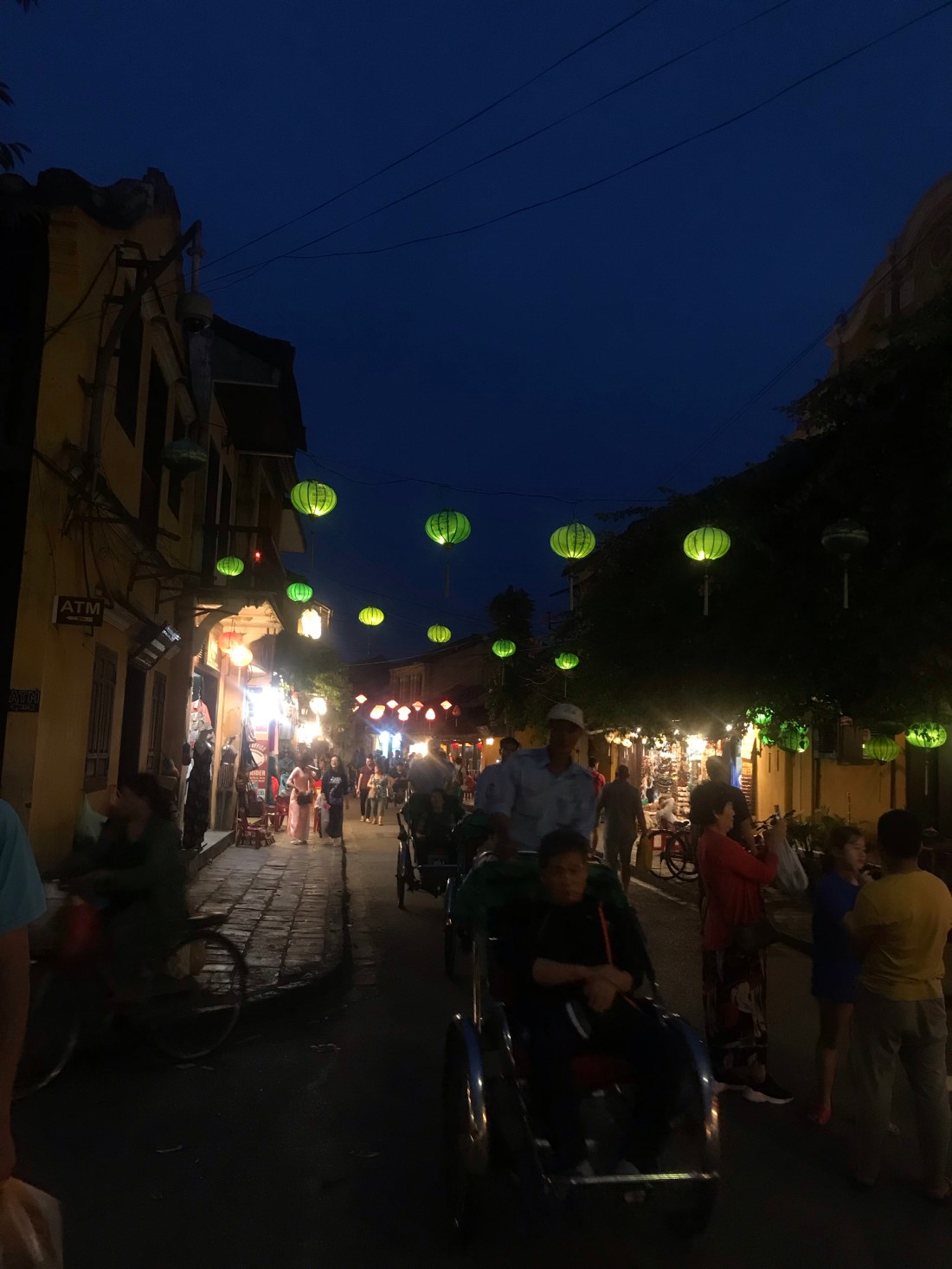

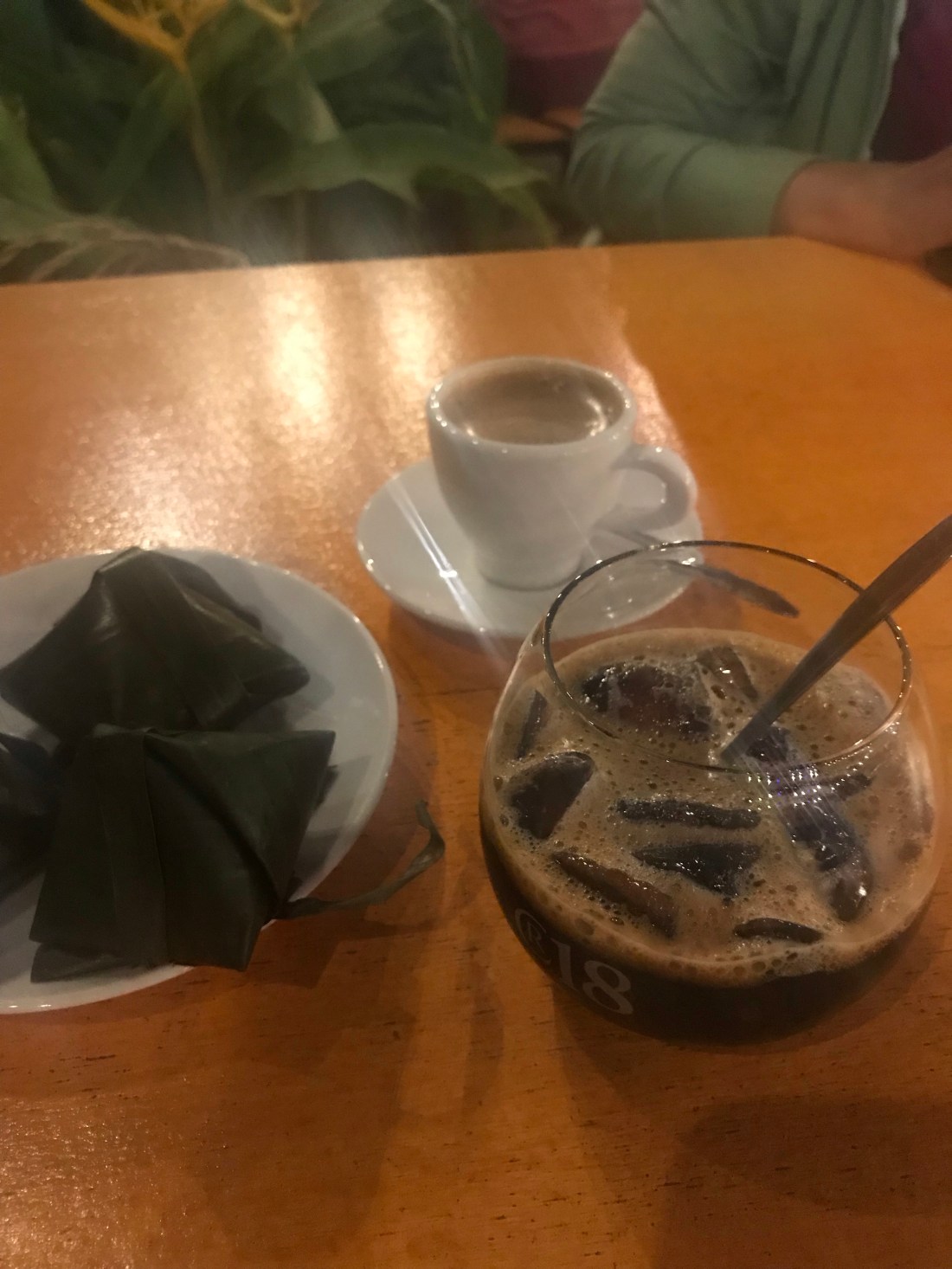

Tomorrow, I fly to Penang island, in North Malaysia. Another country again. I will stay there for a few days before taking a long bus ride down the length of the country back to Singapore.
My only regret on leaving Vietnam is that I wasn’t in Hanoi long enough to do a trip to the beautiful Ha Long Bay, and here in Hoi An I’ve been staying very close to the South China Sea (probably about 10 minutes’ walk away), but I’ve not had a chance to see it or set foot in it. I might have to try and remedy that tomorrow morning if they unlock the gate so I can get out early enough!

Mochi ice-cream might be one of those American cultural appropriations. Real mochi also available here, though more difficult to find. Like pizza and cold pizza – both good and obviously related yet entirely different sports.
LikeLiked by 1 person
😂
LikeLike
Provoked into reading the Wikipedia page on Buddhism in Vietnam the other day by your blog, I was reminded that the South Vietnamese regime at the beginning of the war was Catholic. I learned that their mistreatment of Buddhists was seemingly the major factor in them being overthrown in 1963. It was seemingly so bad that the US was content to stand by while the coup happened, if not actually encouraging it, even under a Catholic president.
LikeLike
😢 yes I heard about the oppression of the Buddhists there. Though nobody mentioned the South Vietnamese government was Catholic at the time. Good to know. And very sad!
LikeLike